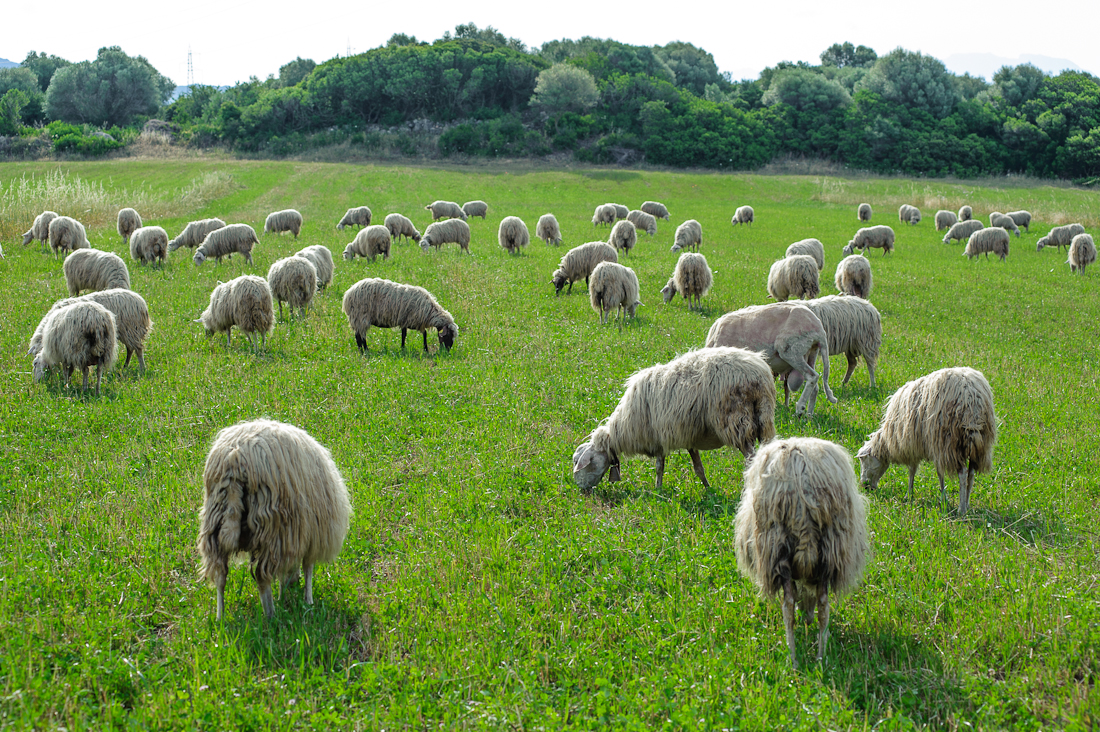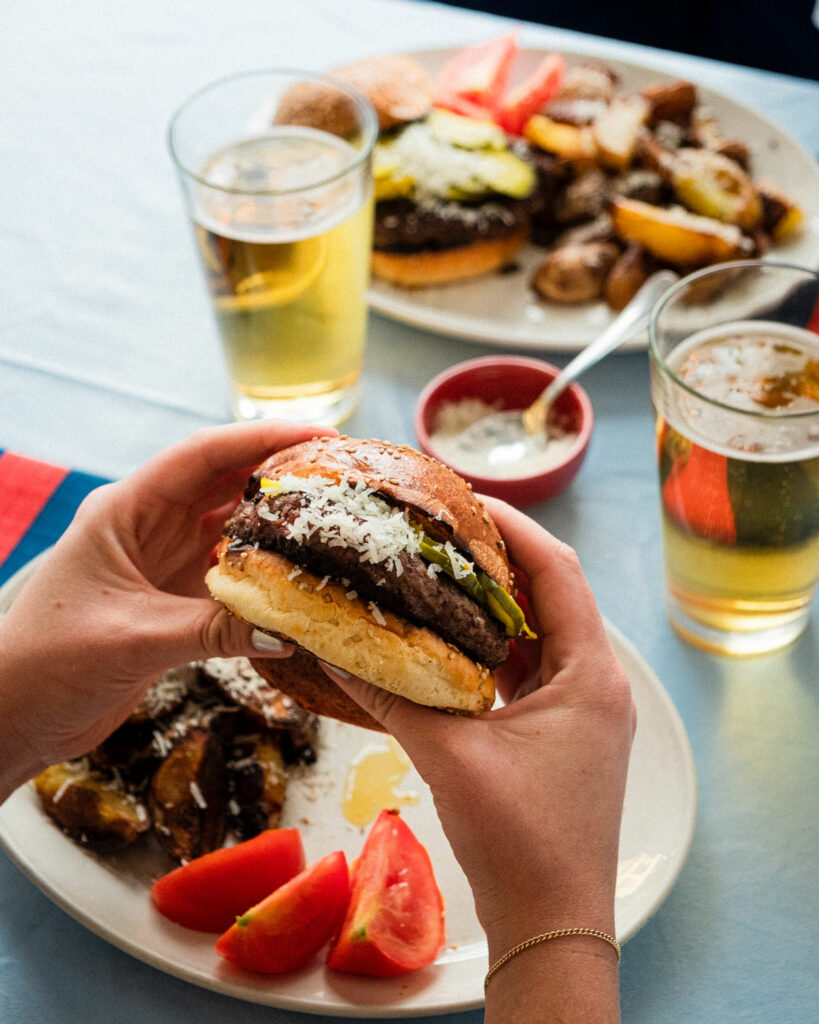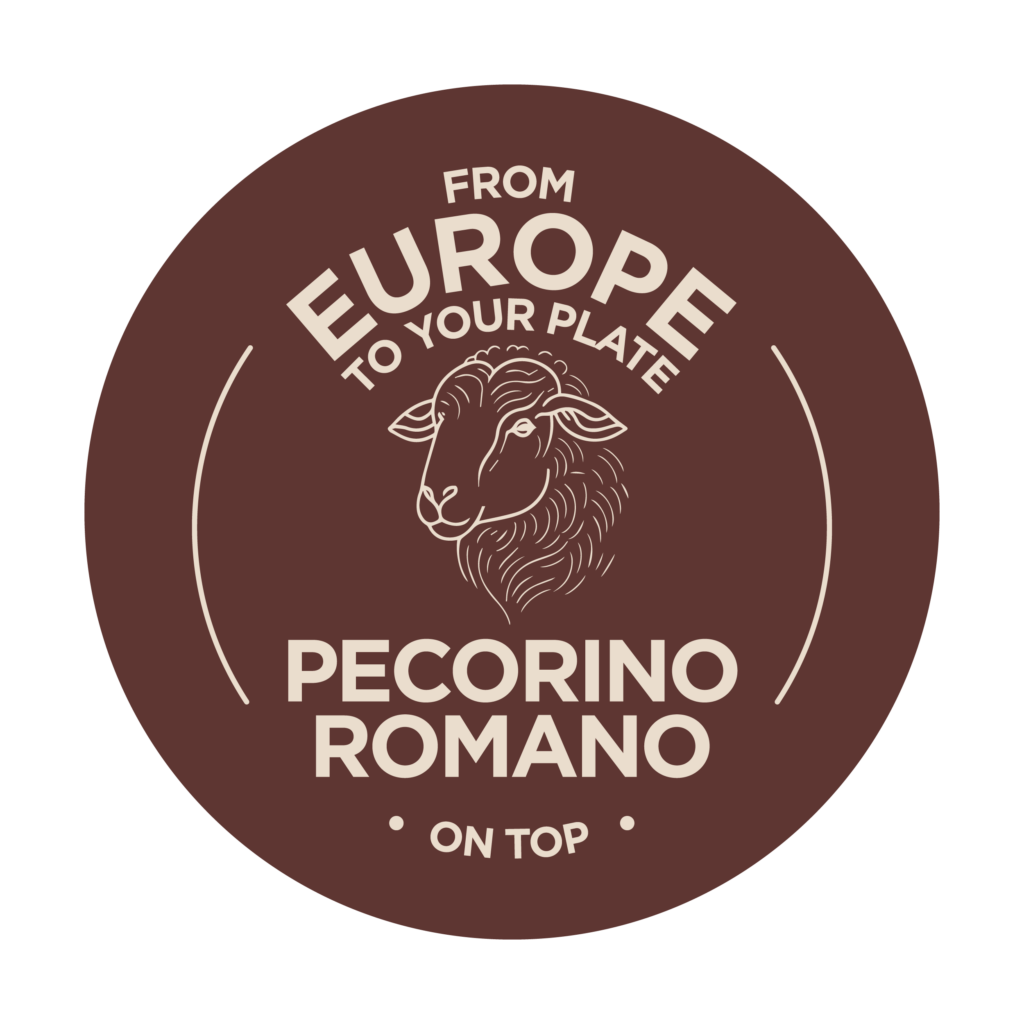Often lumped with “grating cheeses,” Pecorino Romano PDO deserves its own place at the table. Among European cheese, even among world cheeses, Pecorino Romano PDO is unique.
As its name suggests, Pecorino Romano cheese dates back to the Roman Empire where it was prized at imperial banquets and fueled Rome’s legions—in fact, Pecorino Romano was part of a Roman soldier’s daily ration along with bread and farro. The cheese was so valued in the ancient world that its production techniques were mentioned by Pliny the Elder and Hippocrates. Part of its value lay in the way that Pecorino Romano is made. During production, wheels of Pecorino Romano are both brined in saltwater and dry-salted several times; its delicious saltiness gives Pecorino Romano natural, long-term stability, a very welcome property prior to the age of refrigeration.

Pecorino Romano is made with 100% sheep’s milk. On average, ewe’s milk contains twice the fat of cow’s milk, which gives Pecorino Romano its inherent oily richness. Ewe’s milk is so rich and full of solids that there is less byproduct in the Pecorino Romano PDO cheesemaking process—it simply takes less sheep’s milk than cow’s milk to make cheese. Then there are the health benefits. The proteins in naturally sweet sheep’s milk are more readily digested by humans than those in cow’s milk, and its fats are more readily converted into energy. Given its longevity, efficient production, and health benefits, it’s no wonder that Pecorino Romano cheese became a foundational food in Europe. You can’t have bucatini all’Amatriciana, pasta alla gricia, or spaghetti cacio e pepe without it.
With its history and cultural value, it’s no surprise that Pecorino Romano was granted PDO (Protected Designation of Origin) status under European Union law. This ensures that the Pecorino Romano PDO cheese that you’re buying is made using traditional techniques and in Pecorino Romano’s historic regions of origin. For Pecorino Romano, PDO status ensures that it’s made in only three places: Sardinia (to which Romans brought Pecorino Romano cheesemaking in 227BC); Lazio (the region surrounding the city of Rome); and Grosseto (in Tuscany, about 110 miles northwest of Rome).. When buying Pecorino Romano, look for the PDO label and an additional regional logo that reads either “Pecorino Romano Prodotto in Sardegna,” “Pecorino Romano del Lazio,” or “Pecorino Romano Prodotto in Grosseto.”

The flavor, color, and texture of Pecorino Romano evolves as it ages. After five months of ripening, Pecorino Romano PDO can be marketed as table cheese—that is, as a standalone cheese like provolone, gorgonzola, or caciocavallo. At this point, Pecorino Romano is savory, fragrant, and salty, yet it’s also pale-hued and not yet crystalline. The salt in young Pecorino Romano makes it an ideal complement to sweet bites on cheese platters: fresh pears, honey, fruit pastes, and preserves. Nuts—walnuts, hazelnuts—will highlight Pecorino Romano’s underlying nutty flavors. Wine-wise, the robust flavors of young Pecorino Romano pair well with the equally big flavors of Barolo and Chianti Classico; for those who prefer wines with milder tannins, Barbera or Brunello offer contrast. White wine drinkers might go with full bodied whites, Reisling and Gewurtztraminer.
After eight months, Pecorino Romano PDO can be sold as grated cheese. Now the cheese’s color, flavor and texture have intensified: it’s straw colored, intense, spicy, and crumbly. Like its fellow umami bombs in European larder—capers, anchovies, balsamic vinegar, mushrooms, bottarga—grated Pecorino Romano adds a flourish of complexity wherever it is used. Its flavor is so big that, traditionally—in the poorer regions where cheese might be an expensive luxury—cooks toast stale breadcrumbs in olive oil and flavor them with a bit of Pecorino Romano. Even thus stretched for economy, the flavor of Pecorino Romano PDO comes through.

For cooks, Pecorino Romano PDO is incredibly versatile; it goes wherever you’d like some umami and salt. Its intensity means that Pecorino Romano PDO stands up to bigger flavors; use it with chilis on pizzas or in flavor-packed meatballs, soups, and stews. A shower of umami rich Pecorino Romano on pasta puttanesca is a great, vegetarian replacement for piscine anchovies, and, in salads, grated Pecorino Romano offers a sparkling savory hit of salt to seasons your greens.
So, the next time you start reaching for the obvious choice, think twice, and reach for Pecorino Romano PDO instead.
Funded by the European Union. Views and opinions expressed are however those of the author(s) only and do not necessarily reflect those of the European Union or of the granting authority. Neither the European Union nor the granting authority can be held responsible for them.




